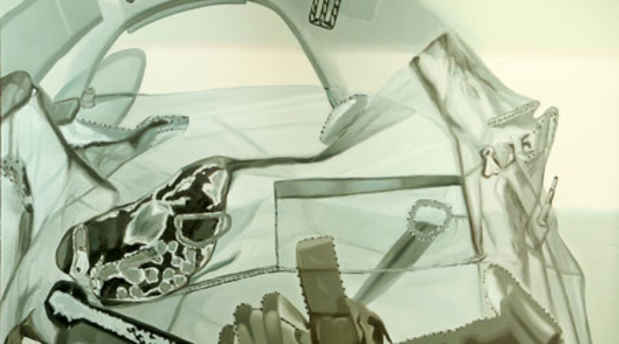"Crossing Art presents The Master Collection" Exibition
Crossing Art

This event has ended.
Crossing Art presents the unveiling of The Master Collection, a selection of artworks by an eclectic grouping of established and emerging Chinese Contemporary artists. While the featured artists are similar with their native Chinese roots and still living today, this exhibition highlights a deeper understanding of their various and disparate oeuvres.
Fay Ku draws on her personal and cultural history to create large-scale drawings and paintings on paper of provocative imaginary scenes that explore themes of youth, identity and nature. The animals in her work become characters acting out autobiographical plots where they are at times portrayed as doppelgangers of their human counterparts. Ku’s use of animals draws comparison to the tradition in Chinese culture where one is asked how old they are by referring to the sign of animal that corresponds to the year they were born, in reference to the Chinese Zodiac. The specific traits and characteristics of the animal become an active part of an individual’s identity. It is important to note that Ku’s characters shape-shift from one animal to the next and in and out of human forms throughout her work.
Yu Jie’s photographs convey a visual narrative of pop culture in the series, 80s Girls, based on young Chinese women surrounded by telecommunications, social media, online games, and KTV entertainment. Continually censored, these women are at the forefront of promoting changes in modern life. The healthy youthful bodies on display are associated with are both complicated and confused, yet vivid and bold. Despite the subject’s cumbersome and complicated lifestyle, Jie uses a simple but straight visual method to represent the women’s real essence. The slight exposure of nudity evokes a life attitude of the new generation girl, an element that was not only frowned upon but also illegal during the 1980s.
Qin Feng approaches his paintings as abstractions but uses different materials to explore ink painting and fuse western techniques with eastern traditions. Qin Feng mixes coffee with ink to create his unique surfaces. Traditionally ink painting is made on xuan or rice paper where Qin Feng throughout his career has used canvas, linen and a thick brown stock paper to create his ink paintings.
Maleonn, whose real name is Ma Liang - a young fictional character that had the power to transform reality at the will of his fantasies and intertwines this concept into his works. Utilizing digital resources and manual re-colorization techniques, Maleonn’s fable-like images combine props, junk, and actors, with an assortment of hues, colors, and theatrical sets, to create imaginary worlds within dynamic metaphorical narratives.
Zheng Lianjie has been making ink paintings for over thirty years and is deeply committed to the exploration of the medium and moving outside of its traditional forms. His ink paintings are rooted in nature combined with personal identity that evokes the social and cultural relevance of these expressions amidst a changing China.
Eric Jiaju Lee intersects traditional Chinese painting with concepts of contemporary abstraction. The process Lee uses is a combination of scientific and natural thought. Lee’s circles and lines are formed by a conscious pouring and brushing of paint and improvisational manipulation by gravity on the paint’s natural movement allowing it to either puddle or drip. The applied physics creates images that recall traditional Chinese Landscape paintings while simultaneously, as the artist himself expresses “[are] microscopic and macrocosmic continuum inherent to nature”.
Gang Chen’s subject matter ranges from religion and sex, to violence and youth which he presents through objects associated with each. Through his combinations of enlarged and fictional x-rayed objects, such as a woman’s purse or a ceramic figure, he challenges his audience to look inward. Chen explains that, “The airport x-ray machine reduces the object to its barest image, a pale inner image, a kind of intense, digital abstraction”. The paintings challenge the possibility of discerning the difference between an “object” that is dangerous versus one that is not. Chen’s work becomes an analogy for our population’s inability to be entirely sure of anything even in our outrageous attempts to control and prevent. Juxtapositions appear through Chen’s affinity between subject matter and application of paint as he depicts the relationship between transparency and opaqueness, public and private. Chen believes that through transparency the lines for communication can be fully opened. Only when we are exposed and vulnerable will we be able to understand, with depth, each other.
Media
Schedule
from November 05, 2011 to December 07, 2011
Opening Reception on 2011-11-05 from 15:00 to 18:00
Artist(s)
Fay Ku, Yu Jie, Qin Feng, Maleonn, Zheng Lianjie, Eric Jiaju Lee, Gang Chen